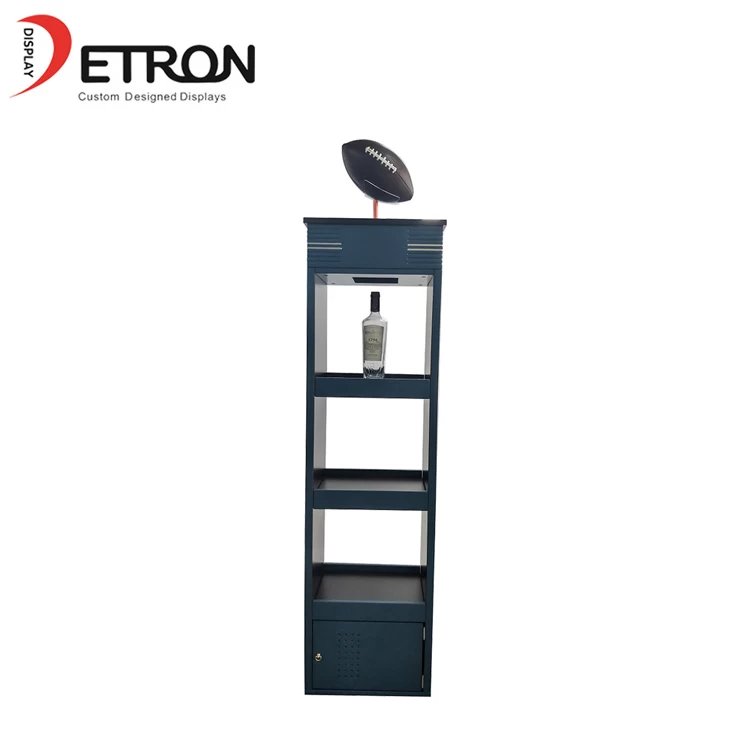Commercial space display design

(1) Store window design
The shop window is not only an integral part of the overall design of the façade, but also the first exhibition hall and "eye" of the store, often based on the goods sold by the business, with clever use of sets, props, background decoration as a background, with the appropriate lighting, color and text description.
(2) Exhibit design
Counter shelves, landscape sketches and shoe changing seats placed in the commercial environment of the store, we call it the "props" of the commercial environment, these "props" not only have the function of displaying and displaying goods, but also beautify the commercial space environment and enhance the function of commercial themes.

(1) Center display
The center display method is a display method that focuses on the center of the entire display space. Put some important, large-scale goods on the display center position to highlight the display, and other minor small items around it to assist in displaying.
The central display method is characterized by a prominent theme, concise and clear. Generally, there is no central display shelf at the entrance, middle or bottom of the shop, but a special exhibition stand. It allows customers to view the goods on display from four directions. The display equipment of the island display should not be too high, too high will affect the spatial vision of the entire store, and will also affect the perspective of customers on the island display from four directions.
(2) Unit display
Unit display refers to the same goods, decorations, POP and other display subjects or logos, advertisements, etc., repeated in a certain range or different display surfaces, through repeated emphasis and suggestive means, to strengthen the customer's visual feeling of clothing products or brands. The characteristic of the unit display method is to make the customer subjected to repeated visual impact, so as to be strengthened many times in the feeling and impression, and has the implied effect of "the product is the only choice", which can make the customer leave a very deep impression.
(3) Close-up display
Close-up display refers to highlighting the functions and characteristics of the product, or using advertising, props and mobile landscaping means, emphasizing the target customers of the product, so that the display and publicity have a clear goal, and can strengthen the communication with customers, help to improve the attractiveness of the product, stimulate the customer's desire to buy. The features of the close-up display method are clear goals, prominent themes, strong landmarks, and concentrated influence, so that customers have a sense of belonging and intimacy.
(4) Open display
Open display is to put the goods in a place where the customer can touch it, so that the customer can participate in it, and the product can be directly touched. The open display method is characterized by strong authenticity and high timeliness. It is a modern form of counterless selling that combines display and sales. All the goods are hung or placed on the shelves and counters, and customers can freely choose without repeated inquiries. This method is not only convenient for customers, making them feel natural and casual, but also easy to stimulate customers' purchase interest.
(5) pantalla completa
La pantalla completa es mostrar algunos bienes que tienen la misma función y el método de uso juntos. El método de pantalla integral se caracteriza por una variedad completa y un espacio grande para la selección. La exhibición integral de bienes, adornos, fondos y luces y otras escenas constituyen diferentes temporadas, diferentes espacios de vida, diferentes entornos naturales y diferentes estados de ánimo artístico, dando a las personas un fuerte sentido de la vida. Preste atención a la encarnación del sentido de la realidad y la creación de estado de ánimo y ambiente, y enfatiza el arte y la innovación, para que las personas puedan obtener inspiración y disfrute estético, pero también tienen una sensación de inmersión. Al mismo tiempo, el espacio debe poder explicar vívidamente y vívidamente el uso y las características de los productos de la ropa, a fin de guiar a los clientes a comprar.

(1) iluminación básica
La iluminación básica es principalmente para extender la luz en la tienda en general, mientras mantiene un color uniforme en la tienda, a fin de garantizar la iluminación básica en la tienda.
(2) iluminación de acento
Para la marca principal, la aplicación de la iluminación clave es muy importante. La iluminación clave no solo puede hacer que el producto forme un sentimiento tridimensional, sino también el fuerte contraste de la luz y la sombra también es propicia para resaltar las características del producto.
(3) iluminación auxiliar
El principal papel de la iluminación auxiliar es resaltar el nivel de color en la tienda, representa la atmósfera colorida y los efectos visuales, y auxiliarmente mejorar el atractivo y la apelación del producto. Además de las fuentes de luz artificiales, la luz natural que cambia con el tiempo, la calidad de la luz mapeada en la superficie de la mercancía, la calidad de la luz emitida desde la superficie del objeto, el tono aparente de la luz en sí, y la reproducción. La tasa de color también es muy importante. Por lo tanto, solo después de que el sistema tenga en cuenta los diversos efectos producidos por la luz, las diversas fuentes de luz se ajustan y aplican, a fin de garantizar que la luz siempre haga que la atmósfera de la tienda, resalte la visualización de las mercancías y mejora el Efecto de la pantalla.


















